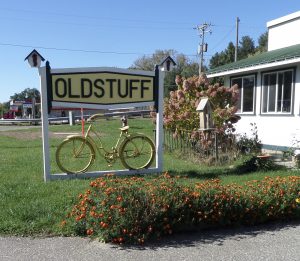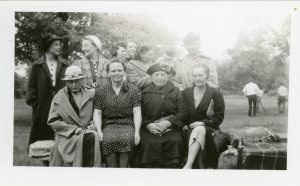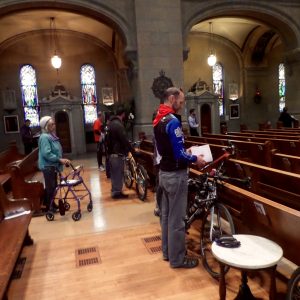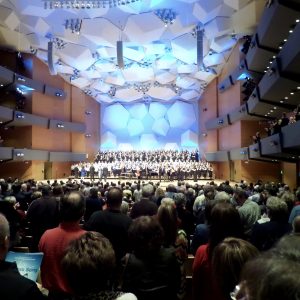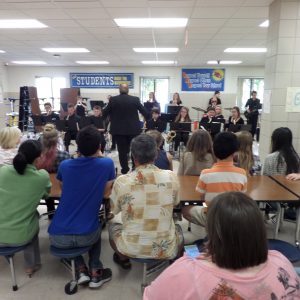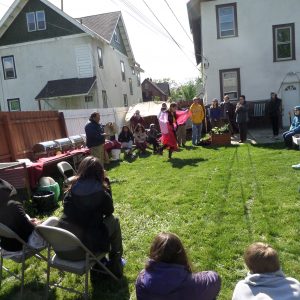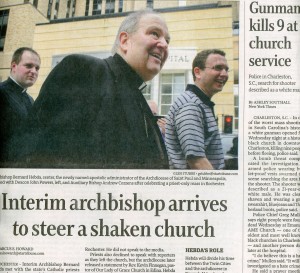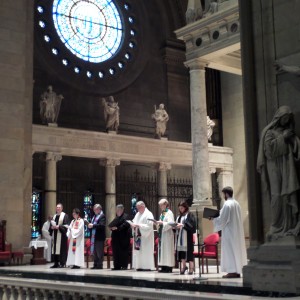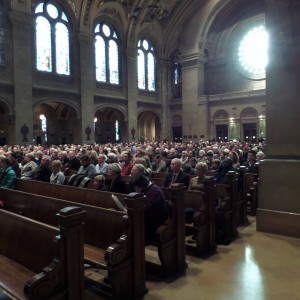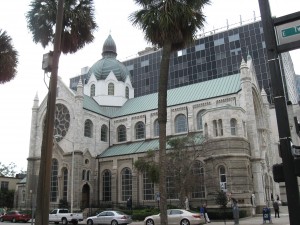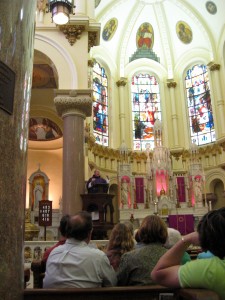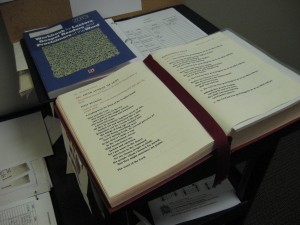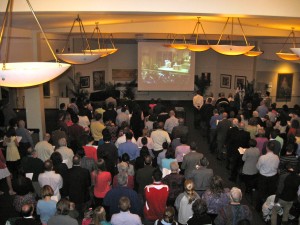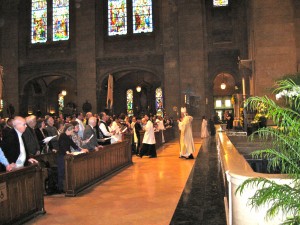UPDATE: This commentary has several comments. They can be found both in the Responses section of this post, as well as directly below the content of the originating post. One of the last updates, from myself, includes a few paragraph comment made in in 1982 by the then-Director of Catholic Charities of St.Paul-Minneapolis, Monsignor Jerome Boxleitner. It is an especially power commentary on the issue of the homeless and society at large. You can read it here: Mgsr Boxleitner 1982001
We’re accustomed to street folks at Basilica of St. Mary, so when I saw the guy standing in the parking area this morning, it was nothing unusual. What was unusual was that he was standing in the line of traffic into the church. He had a cardboard sign that said “Homeless”. I had to pass by him going into the church, and I said “good morning”, and didn’t leave a dollar.
I rarely do.
It was cold, zero degrees at church time, but sunshiny and calm, and this man was dressed for the weather.
This was not a desperate time for him.
I walked on towards the church, and the guy caught up with me and passed by muttering something about going to jail, which seemed directed at me, but he just walked on, catching up with some other guy with a backpack and the two disappeared towards nearby downtown Minneapolis.
There was a little twinge of guilt, but, honestly, not much. Basilica has a very active social justice ministry with a broad range of programs to assist the disadvantaged in many ways, and this man was within a block, or less, of a sandwich and a cup of coffee at the rectory, or coffee and donuts in the lower level of the church, and he wouldn’t be considered a nuisance, in fact he’d be welcomed. And the downtown Minneapolis Branch of Catholic Charities, that deals pretty specifically with homeless is three short blocks away. And we contribute a lot to both the Church and Catholic Charities.
Basilica is very heavily involved in helping those “down on their luck”.
Inside the Church, it was the Feast of the Holy Family, and the celebrant, Fr. Graham, preached a most meaningful homily about Mary, Joseph and the baby in the manger at Bethlehem 2000 years ago.
Most everyone, Christian or not, knows this story. Today, Fr. Graham put the scene in clearer context talking about what society was like back then: hierarchical and male dominated, women and children exceedingly vulnerable, an entire people essentially subjects of an alien government, nobody safe and secure. Jesus, Mary and Joseph in a smelly barn, as it were, surrounded by barn smells. No room in the Bethlehem “Holiday Inn”….
Fr. Graham didn’t know what I had experienced a half hour or so earlier.
The two experiences caused me to think a lot, today, about this entire issue of people and society.
At Basilica, it is recommended NOT to give money to the occasional panhandlers outside. It might seem a surprising position, but apparently is shared by other churches similarly situated: to give is to in effect enable unproductive behavior by such entrepreneurs as the man who I’d passed by. Charity is easily available, and given without question or judgement, but the movement to justice for such folks is not helped along by encouraging a career of begging, or so I remember the surprising column in our Church newsletter some months earlier. [NOTE JAN 2, 2014 see comment and link from Janice Andersen, and my comment, at end of this post]
But this day, my thoughts were also impacted by the sermon about the old days of 2000 years ago, augmented by the news of the previous day, announcing the cutoff of long term unemployment benefits by the Congressional Budget Agreement in Washington.
Was Basilica’s recommendation the same as the policy of Congress? How did these fit with the norms of the harsh society of 2000 years ago?
The man who was cadging me would have been pleased to get a buck. I don’t know if he was “homeless” – all I know is that he had a sign so announcing – an advertisement as it were. I also knew that he knew something about marketing, where to set up his temporary business for greatest likelihood of success.
How did he differ from other entrepreneurs, including those who’ll make a billion dollars this year alone?
Probably no difference at all: just a matter of number of zeroes following the $1.
Will we ever end the problem of stark inequity? Probably not.
Should we stop trying? Certainly not.
Is there a legitimate need for a social safety net broader than simply the man’s family? Of course, there is. Children and women are most often the victims of disequity; Vets, addicts, mentally Ill often fall through the cracks. And that’s where government, the private sector, and institutions like churches and ourselves come in. All are needed on the team.
Did I act appropriately, not giving the guy a buck? I don’t know. I think I pay for this guys care in other ways and I can understand and appreciate the Church’s position on the matter of discouraging panhandling.
But maybe I’m wrong.
Thoughts?
POSTNOTE Jan. 2, 2014:
from Janice Andersen of Basilica of St. Mary: Attached (Janice Andersen Sep 16, 2012) is something that was published in September 2012. I am not sure if this is what you were referring to in your note. This basically states the guidelines that the Downtown Congregations to End Homelessness agreed upon.
I would put a stress on the preamble, which invites people to follow their heart and conscience. There is no black and whit in this, for sure. Also, I put a stress on the first point, which encourages relationship.
Thanks for your thoughtful communication and dialogue!
Peace, Janice
Dick to Janice: The attachment is what I referred to. Thank you. Very helpful. This is a vexing issue, as can be noted by the additional comments. Lurking not far in the background for any Christian, of course, is the message that the divine manifests in the sick, the hungry, the naked, the imprisoned, etc. Then the issue becomes how best to help, when you know that some (many?) are simply masquerades?
It has been a good dialogue, and I hope it continues.
UPDATES:
In addition to the following, there are comments made directly to this post. Click responses tab at the end of the post to see those.
I have not yet found the originating commentary from the Basilica Sunday newsletter, but did find an e-mail I wrote about a meeting I had attended at Basilica nearly five years ago which speaks for itself. You can read it here: JaniceAndersen022209 (Janice Andersen, who authored the commentary I speak of above, directs the social ministries at Basilica of St. Mary. She is a Saint, highly respected. “Families Moving Forward”, referred to in my letter, gives emergency housing to homeless families, and is a shared venture between about a dozen Minneapolis downtown churches.
from Carol T: Interesting, Dick. I understand how you felt. My son and family live in So. Minneapolis, and we take the Cedar exit. There’s almost always someone standing at the bottom of the ramp with The Sign. You don’t know my son, but honestly, he and his wife are some of the kindest people I know (and what a warm feeling to be able to say that 🙂 Both of them work in senior care, and are involved in more neighborhood helping projects than I know about. So I was as surprised as you were about your church’s position when my son lectured me long ago NOT to give to those on the ramp. He claimed that if you do, and then watch, they just head across the street to the nearest bar.
I think it was last winter when I was on my way to their house and it was below zero. There was actually a woman standing at the bottom of the ramp. Big sucker me – I stopped and gave her a little money. When I told my son and hubby, they both jumped on me…
My son knows the neighborhood, and I respect what he says. However. Once he was talking about someone they knew who they found out had fallen on the proverbial hard times, and they actually saw the guy standing on an interchange ramp… What hurts is that somewhere there may be that one deserving person.
Here’s what I did once. There was a young man (but already minus several teeth) standing on Robert Street with The Sign. I stopped and said that I was going to go eat across the street at Taco Bell, and if he walked over there and met me, I’d feed him. He did, and I did. He told me a story of how he was living in the woods with some people somewhere near Robert Street, in a shack which included an illegal heater, etc. He said he was looking for work but didn’t have a resume or any way for someone to reach him. I was teaching an ESL class near there on Robert Street at the time, and I told him if he’d show up at my next class with any info, I’d print him up a resume. Of course he never did.
Now there’s sometimes a guy in a wheelchair on the Cedar ramp. If I get caught by a red light, I busy myself digging in my purse or whatever – and of course feel really guilty. But also. If you watch how many drivers actually do “donate,” even if they are only handing over a dollar, those guys are definitely making more than minimum wage…
One other observation: Over the years I think only once have I ever seen a misspelling on one of those signs. Now, the general run of the population (I’m sorry to say) has a much worse record than that… Political protests and such – misspellings all over the place. I have this vision of them scheduling their shifts (there’s never more than one on those ramps) and then handing off those signs at the end… :\
But still it hurts – and it probably should. Maybe next time invite him to church…
PS from Carol: link here.
from Lydia H: Here are some of my thoughts re:your experience w/The Homeless Guy & its larger context from my own perspective.
For most of the 25 years I’ve been in Minneapolis, I’ve lived within a few blocks of Franklin Avenue in Minneapolis. It’s a regular part of everyday life for me to be asked for money when I;m waiting for the bus or walking somewhere. Sometimes I give money, sometimes I don’t.. Sometimes I feel guilty about not giving, sometimes I feel intruded upon by those who ask for money. As with your experience, sometimes “panhandling” feels like an “enterprise” —not desperation. As a low-income person myself, I think I have some “intuition” on this. Sometimes I don’t give simply because I don’t feel safe pulling my wallet out on the street with a stranger.
Over the last 25 years what I’ve noticed most—both “on the streets” and in the upper levels of “power” in our society (government & media) is an increased MEANNESS. Those at the top demonize the poor more & more, snipping away at what;’s left of the safety net. The latest attack is cutting $40 Billion from FOOD assistance, but, Minnesota hasn’t raised the welfare grant for families on the bottom in 27 YEARS—so,, while certainly still better than my home state of Texas (which is currently REFUSING to accept federal govt money to expand Medicare for healthcare for the poor)—something has shifted. And that means it’s also shifting at “street level”, too: random violence that makes no sense reported to regularly on the 6 o’clock news or considered “fun”, like the rampage of hundreds of teens (organized through Facebook) in a NY shopping mall.
Is “inequality” the reason for these things? In significant part, yes. But, I think it’s also a fraying of SHARED social expectations–whether to care about each others well being or that some behavior is simply totally UN-acceptable–regardless of one’s economic status. The Wall Street “banksters” felt no shame at robbing the nation blind and street thugs seem equally blind to conscience.
Yes, we must reverse the widening chasm of inequality. But, we must also close the gaps in connection and compassion. Raising the minimum wage or demanding a stronger safety net and more job creation is a lot easier than deepening our connections and compassion.
from Madeline: I don’t trust the motives of panhandlers, and have often thought, if anything, one should hand them a card telling where help is available. A buck plus a few others wouldn’t solve the problem of homelessness, unless this a very successful panhandling entrepreneur, which perhaps a few are, and if it is that lucrative, it really wouldn’t be legitimate need, but rather a scam. More likely, the few dollars received in this way would go for alcohol or other drugs.
from Jeff P: I always struggle with that, but we also give to local charities that help the homeless.
The one thing the billionaires and the panhandlers have in common, the income ends up tax free, the billionaires thru loopholes in the system, the panhandler as it is Cash. That is not a value judgment, just an observation.
Response to Jeff from Dick: I have a friend, who at the time was a Priest in an impoverished area of a major city. One time he told me about the ‘circuit rider” charity folks, who did the circuit of churches for handout, say, enough money for their family to spend the night at a inexpensive hotel. The pastors who knew each other knew these folks, since they were regulars. My friend said that some of them were really good at their pitches, and could really have succeeded in regular jobs, but for whatever reason they stuck with their street trade.
The essential difference between millionaires and the rest of us is, in my opinion, that they have (and know how to use) the power to make the system work in their behalf. The rest of us – the so-called 99% – have even more power, but for assorted reasons, like failing to vote, etc., don’t exercise the great power we possess.
from Judy B: I’ve often thought about the issues you raise in this excellent commentary. For years, I would give money, because need might exist — especially if children were involved. In recent years, I’ve walked by panhandlers without guilt. But I’m starting to feel guilty again. I don’t like my callous self. The other day, when a desperate-looking woman approached me outside [a major store] and said she needed money for food, I told her we would go into the store together and she could pick out the food she needed. She refused, but I’m going to try that tactic again.
from a person who prefers name not be used: One time [then-MN] Gov. Pawlenty wanted them to register as panhandlers??? So Nick Coleman, who wrote for the St. Paul paper, went down to Hwy 55 and asked a woman about her typical day. She said they work in groups, one on the street the other 3 women under a tree. By the end of the day they hope to be able to buy one bag of pot, one bottle of wine..and if they are lucky a sandwich. [Twin Cities homeless advocate] Mary Jo Copeland says not to give money send them to her.
from Peter B: More people should read Richard Wolff and Howard Richards on economic issues. My take is that unless there is a change in the cultural norms, anything we do perpetuates the status quo.
This doesn’t mean don’t give people money, etc., but it does mean that these are conscience-soothing but futile gestures. ON the other hand, the homeless guy can’t be making much even if he is merely an “entrepreneur,” so no harm in playing into his game.
Where we need to put our energies is behind substantive change of the rules of the game, which under capitalism are: private property is sacred, contracts must be fulfilled, and investors are free to put their money wherever they like.
If you look at these, they mean the following: if a person has nothing to sell that anybody wants to buy, that person is soon to be homeless, and subject to arrest and indefinite detention. All people, communities, states and nations are at the mercy of the “law” of supply and demand, so they must cut taxes, give away infrastructure, and do whatever the corporations like, or the owners will invest their money some other place where the labor is cheap and the regulations as thin as smoke. Moreover, people are essentially enslaved by this system as life-long workers with no hope of escape.
These cultural norms are totally made-up fictions. There is no “law” of supply and demand, no “invisible hand,” and no reason why a few men in some boardroom should get to decide what to produce, and what to do with the profits. It is a complete scam.
There are many surprising examples around the world in which people have taken over the management of their factories and shops, and manage the distribution of profits in an open and democratic process. But we don’t hear much about them, as the corporate powers that be fear them more than anything, and will stop at nothing to prevent more such successes. It’s why we’re supposed to hate the South Americans and the Europeans and so on.
Meanwhile, those places also enjoy healthcare and unemployment and retirement benefits just for being alive in this world.
So, I guess my take is that the presence of the “Homeless Guy” is a shameful thing, not on him, but on all Americans who have bought this bad deal.
from Dick, Dec. 31, 2013:
It appears that the comments have run their course, as always. As always, there is something to learn from each, whether agreeing or disagreeing.
The most powerful comments, doubtless, are those unexpressed: too close to the surface, too painful, too personal. There was one such comment yesterday at the end of which were some powerful words: “don’t print”. I didn’t, and won’t….
The homeless issue, like any issue, is not simple, and the closer one gets to the day-to-day work with it, including within ones own family, the more complex it gets, though the simple part is always the business of relationship, sometimes impossible to maintain.
I had no relationship context whatsoever with Sunday’s panhandler. His was the “storefront” I didn’t enter, but he did cause me to wonder.
Neither did I relate, as an usher, with the drunk street person who showed up at Mass on Christmas morning, full of Christmas cheer, there to celebrate some long ago memory, but by all appearances likely to interfere with a thousand or more others in the church in one way or another. The gentleman had no boundaries.
What to do?
Everybody was courteous with the gentleman, but one minute I looked and he was gone, most likely ushered out. For every one like him are a large number of others, seeking some kind of personal solace in the church, some very well disguised; some like the guy who quietly sat at the very back of the church, apart from everyone, his apparent wish, standing out, but not outstanding.
In my personal end analysis, with the homeless and the like, it comes down to trying to do a decent job of helping those who need help, wherever they happen to be on their personal journey. Top of the list has to be the most truly vulnerable, the children, and their mothers, and the mentally ill. But there are more as well for whom the family has to be “society” at large (it is called “government”): the people who have no lobby.
Back in 1981, when I was on the Board of Catholic Charities in the Twin Cities, I heard the need powerfully expressed by the then-Director and legendenday Fr. Jerome Boxleitner. I and likely others thought his message was so powerful that it was reprinted, and I’ve kept a copy in my file ever since. Here is what he had to say, then: Mgsr Boxleitner 1982001
Have a Happy (and contributing) New Year.
from Kathy M, Jan 1:
The ramps off 35W to St. Joan’s are “staffed” regularly with a revolving group asking for money. I frequently feel conflicted…randomly though seldom give a dollar.
Good discussion with comments and your wrap up. Anyone must be fairly desperate. I always think it would be humiliating to beg.

